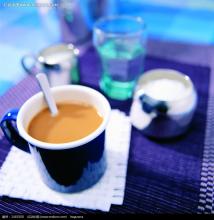Taste characteristics of Guatemalan Coffee Manor with unique fragrant Gump flavor introduction of fine coffee beans
Between 1950 and 1954, the ruling president Jacobo Abens implemented land reform, when big landlords, who accounted for 2 per cent of the country's population, owned about 70 per cent of the country's arable land. Arbens wrote a check for land reform, promising to buy the land held by the big landlords and redistribute it to small farmers. Arbens won the election, and the land reform plan was carried out immediately. Landlords who own more than 223 acres of land will be expropriated as long as there is land not used for production. In the end, an average of 4300 acres of land was expropriated from 1059 farms, and about 100, 000 farmers were given ownership of the land. [7]
United Fruit has its largest estate in Guatemala, and it also owns medium
Guatemala
Guatemala
Inter-American Railway and the only seaport in Guatemala. Driven by the United Fruit Company, the US Ministry of Foreign Affairs began a propaganda war against Guatemala to crack down on the Arbens regime in the name of anti-communism. The Central Intelligence Agency, in cooperation with the opposition among Guatemalan soldiers, launched an operation called Operation PBSUCCESS. [7]
In 1954, Arbens was overthrown and Castillo Armas became the new dictator. The new government immediately invalidated all reforms. Enter the period of transition between the right-wing military government and the literati government. [1]
In 1957, Armas was assassinated and his heir was a soldier who was already known for his bloodshed in the dictatorship of the 1940s. [7]
In 1960, leftist military groups appeared in Guatemala. [1]
In 1982, the leftist guerrillas across the country merged to form the "National Revolutionary Alliance of Guatemala" and armed struggle spread throughout the country. Farmers dissatisfied with the overthrow of the Arbens regime organized a guerrilla group in which more than 100,000 people were killed and millions displaced. In September 1982, the persecution of the local Mayans by the Guatemalan army was close to genocide, and more than 9000 Mayans were killed. Since 1983, persecution on the part of the Government of Guatemala began to decrease and the country began to democratize again. However, the disparity between the rich and the poor has not been solved, and only a small number of people who account for 1% own more than 60% of the arable land and wealth. In 1985, Guatemala reorganized the general election. In Guatemala, it is famous for producing high-quality beans, which is the highest elevation and dry climate in the coffee growing area of the country. Located in a rare non-volcanic area in China and the United States, the mountains are potholed and the terrain is very dangerous. Although nearly 2000 meters above sea level, the warm, dry air from the plains of Mexico protects coffee trees in the area from frost.
Guatemala Antigua Coffee is not only smooth, high hardness, good quality, more full-bodied and sour and sweet perfect match, coupled with a trace of smoke, but also emphasizes its deep and mysterious. In particular, the sour, sweet and mellow texture of Antigua is so perfectly coordinated that it is not only of good quality, but also has a stronger flavor, richer taste and stronger tobacco flavor than other Guatemalan coffee.
Antigua coffee, which grows in volcanic areas, prides itself on its rich aroma, with a variety of coffee flavors ranging from strong sour to light sour. General coffee that does not pass this classification standard does not mention the name of the region of production, but only SHB. This bean belongs to bourbon coffee beans, is one of the varieties with strong sour taste, mellow taste and slightly wild. Guatemala's extremely hard beans are famous for their elegant, sour, clean, well-structured, as well as sour apples, berries, jasmine, orange peel, green pepper, sweet and sour fruit, sweet chocolate, and even smoky aftertaste. Excellent sour taste, mellow aftertaste, mysterious feeling. Suitable for hangover release bitter and fragrant, good taste
The coffee produced in the highland is mellow and has a good sour taste, which is well received and is the best material for mixed coffee.
Coffee varieties:
Arabica species (Arabica):
It accounts for 85% of total coffee production, including Brazil, Colombia, Guatemala, Ethiopia and so on. The beans are turquoise, thin and small, with special aroma and sweet acid, which is good to drink with other coffee. Excellent quality, more suitable for public taste.
Robada species (Robusta):
Roughly planted in Java, Indonesia, drought-resistant and insect-resistant; bitter taste, but bitter with fragrance, especially after cooling with a unique sweet taste, suitable for the preparation of cold coffee, mellow and extremely bitter.
Liberia plus species (Leberica):
The quantity of this variety is very small, most of it is used to synthesize coffee and make coffee essence, it is difficult to see in the market, the quality is not good, and the flavor of the single product is not good.

Important Notice :
前街咖啡 FrontStreet Coffee has moved to new addredd:
FrontStreet Coffee Address: 315,Donghua East Road,GuangZhou
Tel:020 38364473
- Prev

Detailed flavor of Indonesian Java coffee taste manor characteristics of boutique coffee beans
The main Indonesian newspapers are Compass, Professional Voice, Indonesian Media, Republic Daily, Voice of Innovation and Indonesian Business Daily; English newspapers include Jakarta Post, Indonesia Observer, etc. Chinese newspapers used to have only the Indonesian Daily sponsored by the government, while the Chinese Post (Chinese and Indonesia) has been newly established in the past two years.
- Next

Introduction to the flavor and taste characteristics of the coffee producing area of Kilimanjaro, Tanzania
There are mainly Tanzanian national radio, national television, independent television, Dar es Salaam television and so on. Radio Tanzania is a national radio station based in Dar es Salaam and broadcasts in English and Swahili respectively. The political situation in Tanzania has been stable for a long time, and small-scale conflicts between political parties will occur before and after the general election, and the government has the ability to control the situation. The overall public security situation is good.
Related
- Detailed explanation of Jadeite planting Land in Panamanian Jadeite Manor introduction to the grading system of Jadeite competitive bidding, Red bid, Green bid and Rose Summer
- Story of Coffee planting in Brenka region of Costa Rica Stonehenge Manor anaerobic heavy honey treatment of flavor mouth
- What's on the barrel of Blue Mountain Coffee beans?
- Can American coffee also pull flowers? How to use hot American style to pull out a good-looking pattern?
- Can you make a cold extract with coffee beans? What is the right proportion for cold-extracted coffee formula?
- Indonesian PWN Gold Mandrine Coffee Origin Features Flavor How to Chong? Mandolin coffee is American.
- A brief introduction to the flavor characteristics of Brazilian yellow bourbon coffee beans
- What is the effect of different water quality on the flavor of cold-extracted coffee? What kind of water is best for brewing coffee?
- Why do you think of Rose Summer whenever you mention Panamanian coffee?
- Introduction to the characteristics of authentic blue mountain coffee bean producing areas? What is the CIB Coffee Authority in Jamaica?

